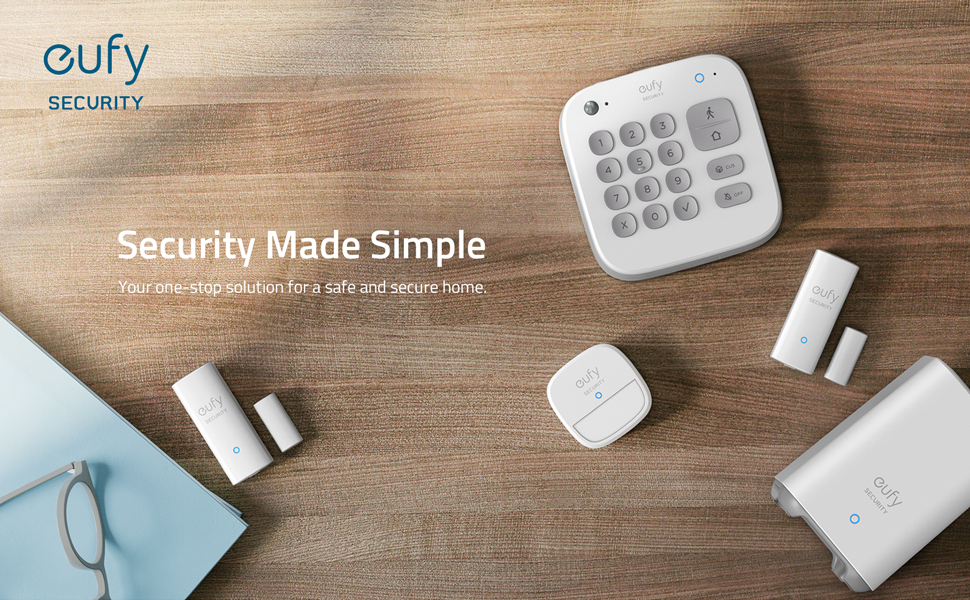Unlocking Peace of Mind: Eufy 5-Piece Home Alarm Kit Detailed Review
The Eufy 5-Piece Home Alarm Kit offers a streamlined, no-frills approach to home security. While it excels in affordability and ease of use, certain limitations in functionality and expandability may not satisfy those seeking advanced security features. Nonetheless, for homeowners interested in basic protection without the ongoing costs of a subscription, this kit represents a sound investment.
The Good
- Ease of Installation and Use
- Affordable Price Point
- Subscription-Free Model
The Bad
- Basic Functionality
- No Backup Battery in Base Station
- Volume Quiteness and Notification Overload
-
Design & Aesthetics
-
Functionality & Ease of Use
-
Expandability & Integration
-
Value for Money
-
Customer Support & Community
About a month ago, I expressed my frustrations in an article on Qwerty Articles regarding Google’s decision to discontinue the Google Nest Secure system on April 8th, 2024, a demise just under a month away now.
My critique centered on Google’s apparent disregard for its customer base, compelling us to transition to an inferior ADT system. Which was a decision that publicly proved highly unsatisfactory due to ADT’s myriad of issues ranging from software glitches and subpar customer support to a complete lack of features.
Within less than a year, I found myself abandoning ADT’s poor service in pursuit of a more reliable home security solution. My quest for a new alarm system was shaped by the realization that, despite its flaws, the Google system had the advantage of not requiring a subscription fee for access to its premier features, a rarity in the home alarm market.
This market, as I discovered, is dominated by a few major players, such as SimpliSafe and Ring, whose offerings are significantly diminished without a subscription, essentially mandating additional payments for even the most basic functionalities like mobile alerts.
Moreover, what happens when the big companies need to pay themselves bigger and bigger bonuses every year? They begin to squeeze their customer’s wallets in a time riddled with secret inflation.
Initially, I considered the Roku Alarm system, which was an unexpected contender from a company known for its streaming devices. However, further research revealed that Roku’s offerings were essentially rebranded or remanufactured Wyze products, a brand with which I had previous unsatisfactory experiences.
It was a recommendation from a friend that introduced me to Eufy, a subsidiary of the renowned battery manufacturer Anker, specializing in home automation products ranging from robot vacuums to cameras and alarm systems. Despite recent concerns over privacy issues with their camera systems, Eufy’s prompt response to these problems and adjustments in policy somewhat alleviated my apprehensions.
Admittedly, my initial hesitation towards adopting technology from Eufy, given its Chinese origins, was overlooked by the company’s commitment to local data security and the overwhelmingly positive consumer feedback it has garnered from all over Reddit.
Enticed by a promotional offer and the straight-line features included in their basic 5-piece home alarm kit, I decided to delve into the Eufy ecosystem.
This review aims to share my experiences and insights into whether Eufy lives up to its reputation and whether it could indeed be the superior alternative for those seeking a reliable home security solution.
Welcome to my review of the Eufy Security Home Alarm system.
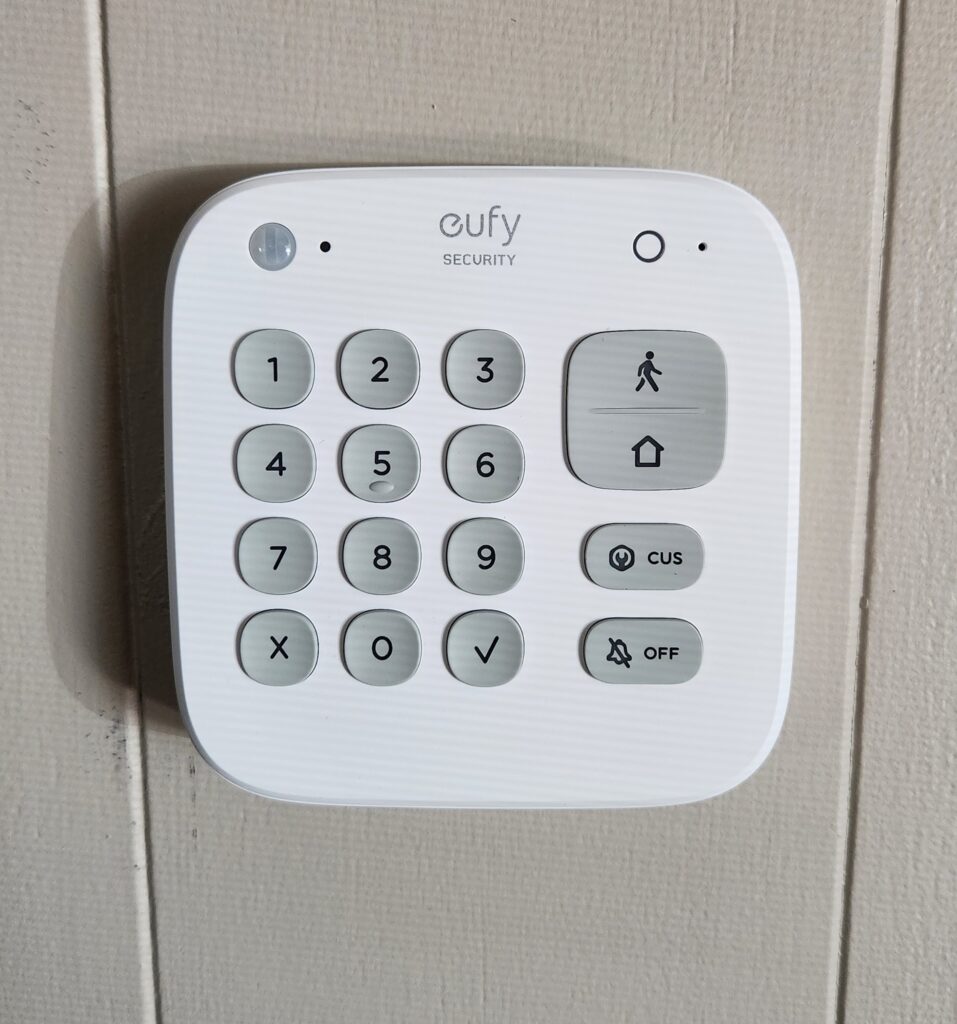
Design
In this review, it’s key to clarify the use of the term “basic,” as it will frequently appear throughout the discussion. Here, “basic” refers to the fundamental components of the alarm system, those that fulfill the primary function without delving into advanced or supplementary features.
In certain contexts, “basic” might even lean towards “inexpensive,” given Eufy’s strategy of economizing on a product intended for a one-time purchase. Nevertheless, the Eufy Security 5-Piece Home Alarm system is characterized by its straightforward, essential functionality.
The 5-piece kit comprises a wireless keypad, two door/window sensors, a motion sensor, and the second-generation Eufy HomeBase station. For a ranch style home like my own, this essentially covers all the necessary components to establish a baseline level of security.
Eufy thoughtfully includes both mounting hardware and 3M adhesive tape for installation, catering to user preference. Additionally, a prominently sized window sticker is provided to deter potential intruders by signaling the presence of an alarm system.
From an aesthetic standpoint, the Eufy alarm system boasts a modern, sleek design that seamlessly integrates into various home decors. The devices, with their all-white exteriors, effortlessly blend into the background, remaining inconspicuous unless specifically sought out.
The keypad, in particular, merits praise for its user-friendly design; large, softly backlit numbers make it easy to operate, enhancing the experience of arming or disarming the system. Its wireless functionality further underscores the system’s convenience and adaptability.
The door sensors maintain a standard size, while the motion sensor is notably compact, avoiding the cumbersome appearance typical of traditional alarm systems. The HomeBase station, serving as the system’s operational core, is remarkably compact, capable of being discreetly placed behind everyday objects like a picture frame.
Constructed from plastic, the HomeBase station’s design is consistent with the rest of the system, maintaining the sleek, all-white aesthetic. On the back, you’ll find a power jack, a USB port, Ethernet jack, and a reset pinhole and a sync/alarm off button.
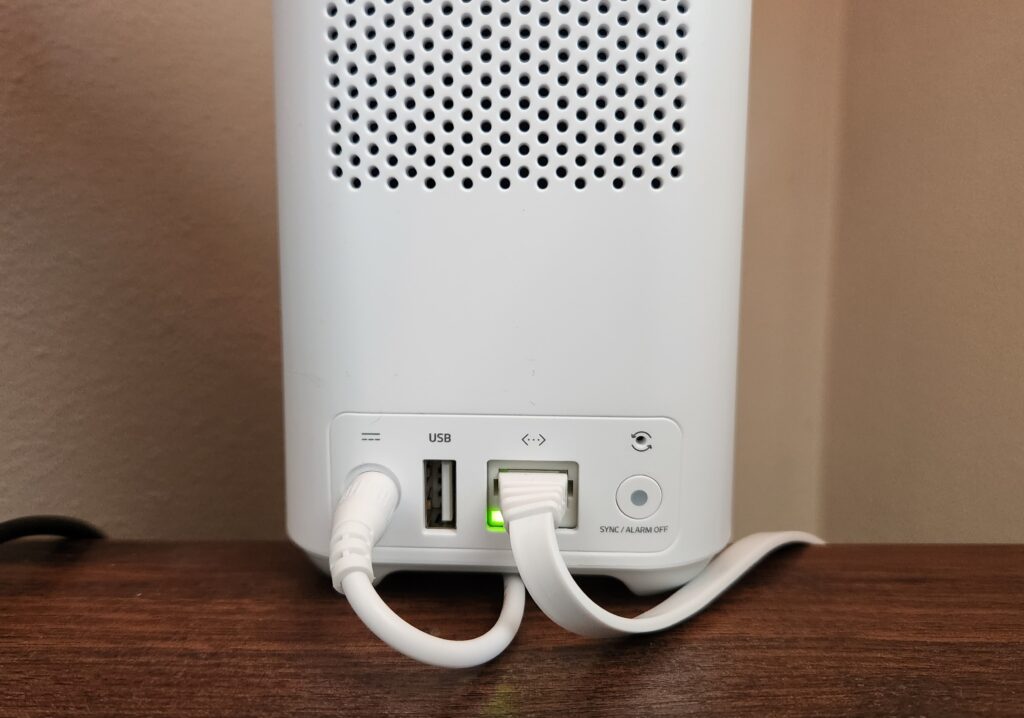
One flaw I have with the alarm system is it’s often hard to tell when the Eufy alarm is armed or disarm. On the Nest Secure and the ADT systems, a status LED somewhere on the unit would indicate that the alarm was armed. On the Eufy’s, the keypad will display its current state if you get closed to it, but it’s not apparent from far away. Which could lead to users accidentally going to bed with a disarmed alarm.
For a system that prioritizes essential functionality, the Eufy Security 5-Piece Home Alarm adequately serves the needs of a standard home, such as my own ranch-style residence. It successfully balances aesthetic considerations with the practical requirements of a basic alarm system, something not always achieved even by the leading brands in the market.
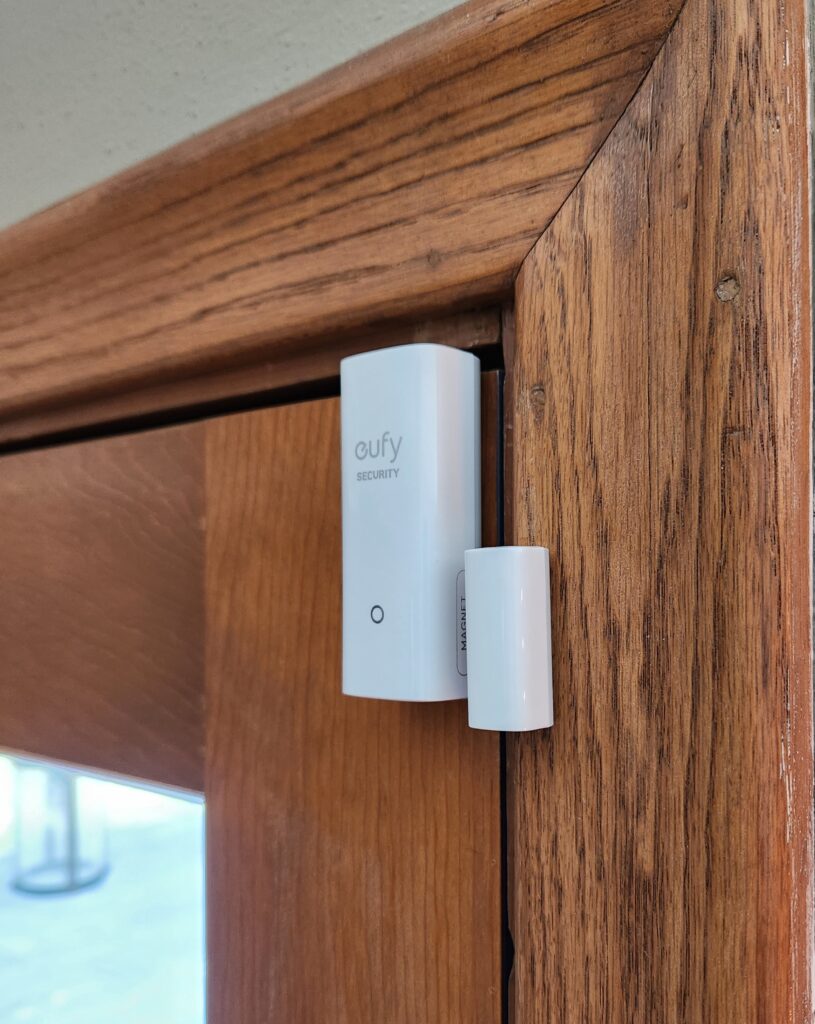
Functionality
The appeal of Eufy’s Security alarm system, particularly in comparison to alternatives like Roku’s offerings, lies significantly in its expansive product ecosystem, which promises enhanced integration and potential future expansion.
For instance, my current setup includes an iRobot vacuum and Google Nest cameras. The prospect of switching to Eufy products is appealing, especially considering the potential for subscription-free services and the recent increases in Nest Aware fees.
A notable advantage of Eufy’s ecosystem is the central role played by the HomeBase station. This device does more than just manage the alarm system; it serves as the hub for synchronizing various Eufy products, making it a key component in building a unified smart home setup.
The 5-Piece Alarm comes with a Generation 2 HomeBase, although Eufy has introduced a Generation 3 version with AI features, enhanced storage capabilities for more extensive camera, and better device support. For newcomers to Eufy or those with modest requirements, the Generation 2 base suffices as an introduction to the ecosystem.
Despite its many functionalities, the HomeBase’s lack of a built-in backup battery is a glaring drawback, detracting from its overall reliability. I connected my HomeBase to a UPS so I could maintain connectivity when the power goes out.
The initial setup process, requiring a direct Ethernet connection, is another point of contention. A more streamlined setup process via Bluetooth or immediate Wi-Fi connection would be a significant improvement for user setup.
Once past these initial hurdles, setting up the individual components of the kit is straightforward. I recommend fully charging the keypad before starting to ensure a smooth installation process.
As with many IoT devices, users are reliant on the manufacturer’s app for operation and management, a dependency that comes with its own set of challenges, including potential support discontinuation or design flaws.
The Eufy Security app, while functional, could benefit from a more user-friendly design. It’s heavy on notifications and somewhat intrusive with requests for user feedback. It’s design also smells like the infuriating Life360 app that some Chinese-Amazon products use.
Fortunately, after navigating through its somewhat convoluted menu system, it’s possible to customize notifications to only receive alerts for specific events, like a door being left open or motion detected when the system is armed. However, the app could be improved by delaying motion alerts until after the alarm is fully armed.
One feature I do miss from the ADT app is the “auto-arm” feature. Eufy allows you to set a start and end time for arming the system, but I would like to see an option that auto-arms at a specific time and keeps it arm until disarmed by either the keypad or app.
The app’s compatibility with other Eufy products is a plus, offering potential for a more integrated smart home experience. Features like geofencing, which automatically arms or disarms the alarm based on your phone’s location, add a level of convenience and automation.
A critical vulnerability, however, lies in the system’s fundamental design. The HomeBase station, which can be easily disabled by simply unplugging it, reveals a significant security flaw. This simplicity in deactivation underlines the system’s basic nature and highlights its limitations in providing comprehensive protection.
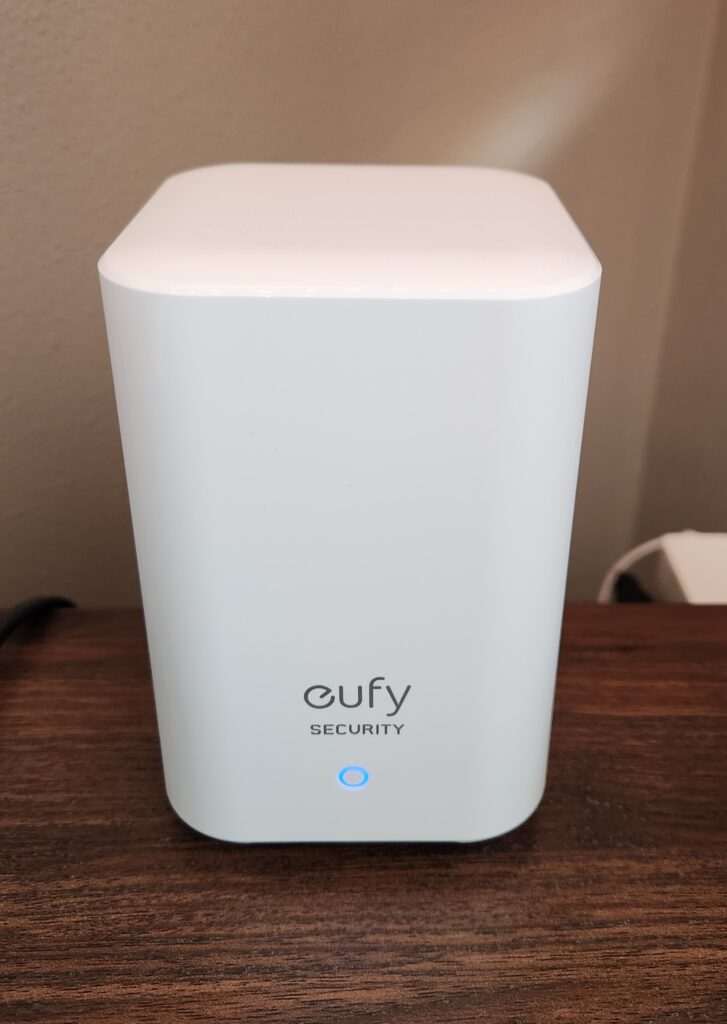
Not only is the HomeBase defeated by even a 5-year-old, but the alarm noise the unit makes is incredibly weak. Users with a larger home will need to purchase a second siren. Since I placed my HomeBase in another room for the UPS, that makes that door open chimes also are hard to hear given those noises too come through the HomeBase.
Despite these concerns, the alarm’s functionality meets my basic security needs. The system’s alarm, while not particularly loud, serves its purpose for smaller residences, though additional sirens are recommended for larger spaces.
The subscription free (paid professional monitoring is available) model is one of Eufy’s strongest selling points here, but I continue to have the highest hopes that the mobile app continues to work for years to come.
Ultimately, Eufy’s Security 5-Piece Home Alarm system offers a straightforward solution for those seeking basic security measures. It may not offer advanced protection strategies, but for individuals living in relatively safe areas who desire a simple deterrent for potential intruders, it suffices. The system also opens the door to Eufy’s wider ecosystem, providing users with the option to expand their smart home setup further.
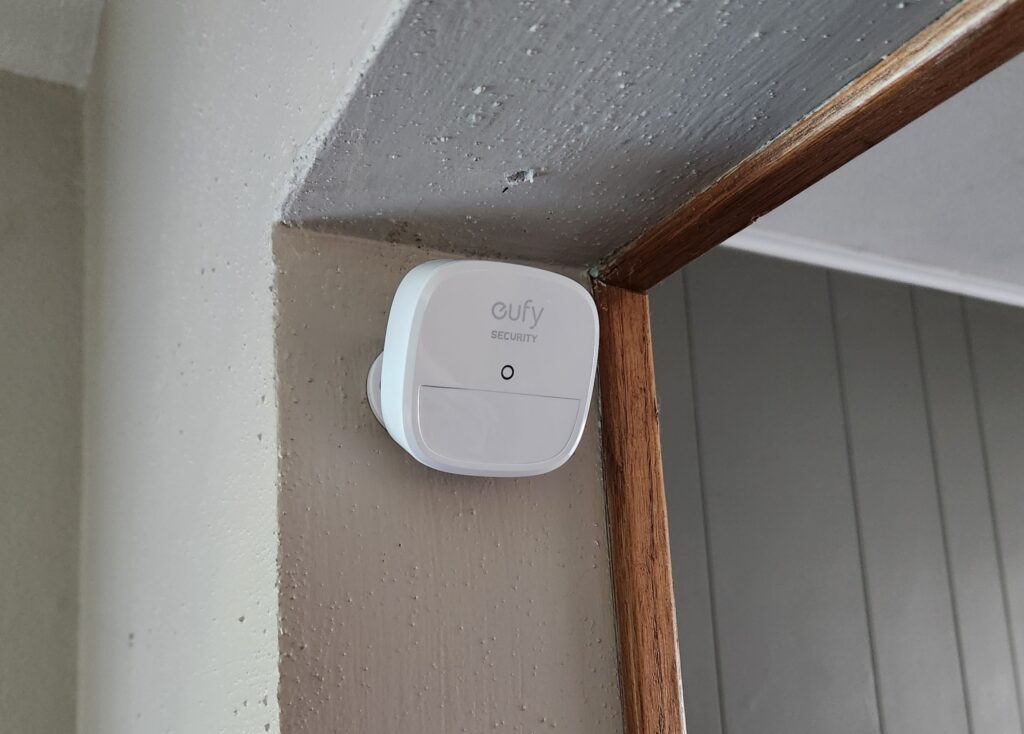
My Final Thoughts
In reflecting on my journey with the Eufy system, I am compelled to acknowledge the insightful contribution of YouTuber DoItYourselfDad, whose review offered a comprehensive exploration of the system’s strengths and weaknesses. His analysis provided valuable context and helped frame my expectations for this product.
My initial decision to purchase the alarm was significantly influenced by an attractive sale on Eufy’s website. The brand employs a dynamic sales strategy, with countdown timers that suggest urgency, yet the opportunities for savings reappear with surprising frequency.
Through Amazon, I purchased the kit for $126 and find that this represented exceptional value, considering the functionality and peace of mind it delivers. For those considering this system, I recommend first creating an account on Eufy’s website (you will need to do this anyways) as it grants access to a 10% discount for additional savings.
While the system’s list price of $160 may challenge its appeal, given its “basic” nature, the discounted price I secured underscores its worthiness as an investment in home security. My commitment to this system is not fleeting; I anticipate it will serve my security needs for years to come, with plans to enhance its capabilities through additional sensors and integration within the Eufy ecosystem as my living situation evolves.
If someone were to dare break in while I was sleeping at night, the alarm is simply there to wake me up and prepare to use the one metric tool that the US has.
The subscription-free model, coupled with a functional mobile app, responsive customer support, and an active user community, makes the Eufy alarm an attractive proposition. The system’s expandability further solidifies its position as a versatile and user-friendly option in the home security market.
In conclusion, the Eufy Security 5-Piece Home Alarm system stands as a commendable choice for those in pursuit of a reliable, no-frills security solution. Its combination of affordability (particularly when on sale), ease of use, and expandability within an integrated ecosystem renders it a recommendation I confidently extend to anyone exploring home alarm systems.
© 2024 Justin Vendette

